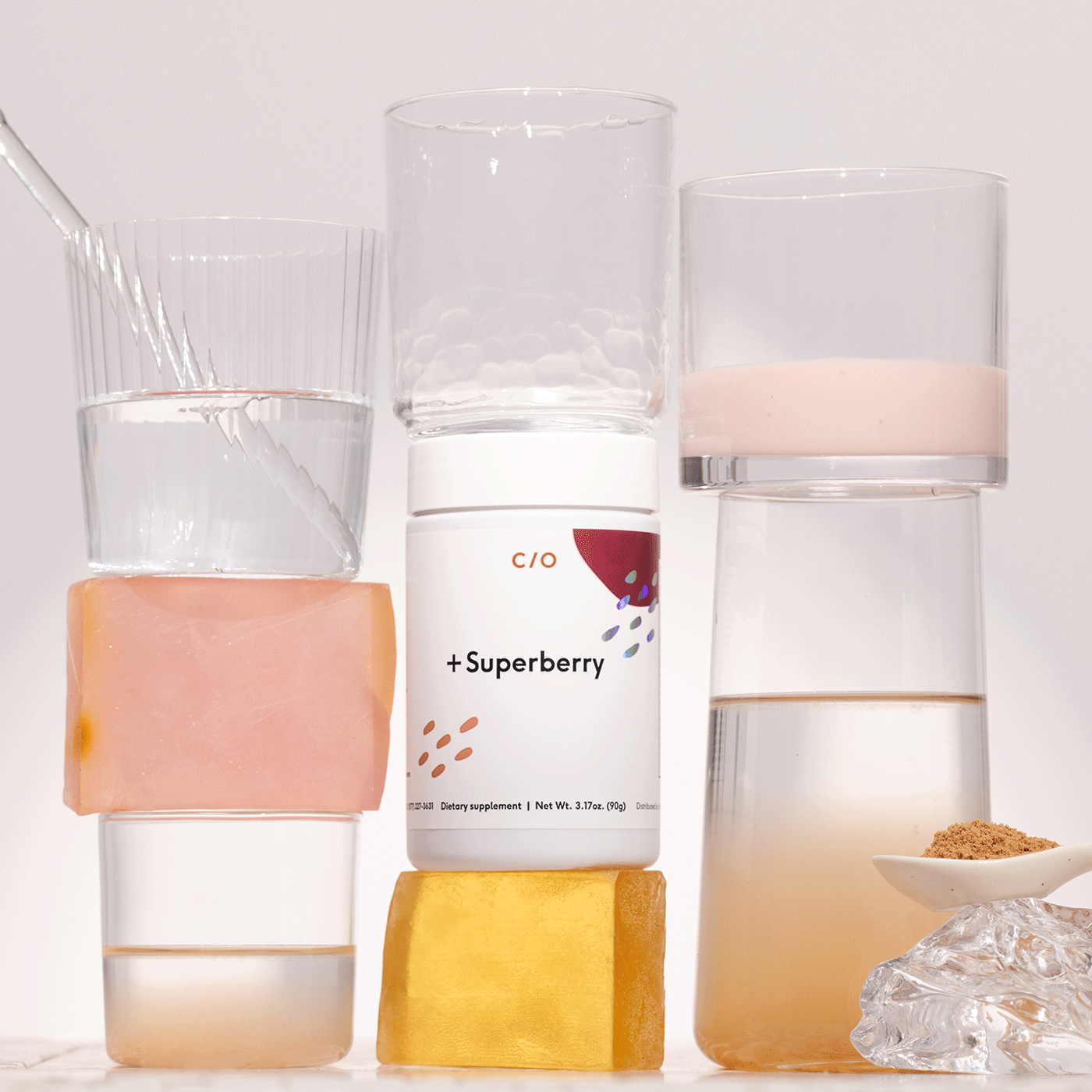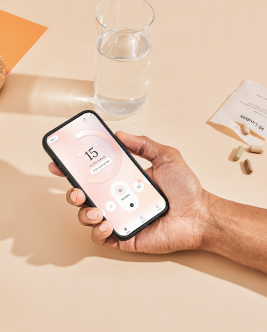nutrition
Healthy Solution or Fad? A Simple Guide to Fruit and Vegetable Supplements
On This Page

One in ten people do not get nearly enough fruits and vegetables in their diet. Supplements can help, but they are not intended as a replacement.
Fresh fruit and vegetables are critical components of any healthy diet plan. Though it is highly recommended that adults eat at least 1½ - 2 cups of fruit and 2-3 cups of vegetables daily, research has shown that only one in ten adults meet this minimum requirement.
There are at least nine different families of fruit and vegetables known to be in existence, so the available options abound. Filling half your plate with the colors of the rainbow (a wide assortment of fruit and vegetables) will provide you with natural sources of essential vitamins, minerals, phytochemicals, and antioxidants. Yet busy lifestyles, preference for the convenience of fast food and processed food, and even the depletion of nutrients in agricultural soil make it difficult to get the most health benefits out of your eating.
While a variety of fresh, healthy, vitamin-rich foods may be the key to better nutrition, it’s just not happening. Many people are now turning to fruit and vegetable supplements instead.
What are fruit and vegetables supplements?
Fruit and vegetable supplements are typically formulated in powdered, gummy, or capsule form. They may also be called greens supplements or greens powders, but they’re different from fruit and vegetable juices. Each type of fruit and vegetable supplement may be slightly different depending on the ingredients they contain.
Fruit and vegetable supplements are not a replacement for a healthy diet. But they can help to fill in nutritional gaps and provide a wider variety of nutrients than what you can sometimes find seasonally in the produce section of your local grocery store. These supplements offer a convenient way to support your intake of essential vitamins like C, E, beta carotene, and folic acid. They are easy to transport, and have a longer shelf life than fresh produce.
How are fruit and vegetable supplements made?
Each type of fruit and vegetable supplement may be produced in a slightly different way, but the typical process is to dry or dehydrate fresh produce and then blend it into a powder or create a gelatin-based gummy that contains the ingredients.
Fruits and vegetables are a rich source of many essential vitamins and minerals. By dehydrating and blending them, supplements may contain a more concentrated amount of the typical nutrient profile that is found in fresh produce. However, some of the nutritional value may be lost during processing, since some nutrients, like antioxidants, are vulnerable to elements like light or heat.
Common Ingredients in Fruit and Vegetable Supplements
Dietary supplements that are formulated from fruits and vegetables can contain a wide variety of different nutrients, but many of them rely on a common set of ingredients.
Vitamins and Minerals in Supplements
Vegetables and fruits are rich in vitamins and minerals. Ingredients that are commonly found in fruits and vegetables supplements may include:
- Vitamin A as beta-carotene from carrot, mango, or sweet potato
- B vitamins (thiamin, riboflavin, niacin, pantothenic acid, vitamin B6, biotin, and folate) from asparagus, broccoli, berries, citrus, tomatoes, spinach, and peas
- Vitamin C from citrus, berries, bell peppers, kiwi, and tomatoes
- Vitamin E from broccoli, spinach, and other dark green vegetables
- Vitamin K from spinach, kale, and blueberries
- Calcium from dark leafy greens like spinach and kale
- Magnesium from dark leafy greens like spinach
- Potassium from apricots, squash, banana, and avocado
Vitamin B12 is mainly found in animal foods, like meat, seafood, eggs, and poultry. Fruits and vegetables supplements are probably a poor source of B12 unless the supplement notes that it is fortified with another source, like nutritional yeast. If you need to supplement with B12, your healthcare provider will likely recommend a standalone supplement or a multivitamin that includes the exact amount of B12 you’re getting from each serving.
Vitamin D, the famed “sunshine vitamin,” has few food-based sources, although some mushrooms can provide this fat-soluble nutrient. The average fruit and vegetable supplement probably does not contain much, if any, vitamin D, unless the label specifies that it comes from a different source.
Minerals like iron and calcium can be found in fruits and vegetables, but the digestion and absorption process of these minerals can compete with each other. If your healthcare provider has suggested that you need supplemental calcium or iron, fruit and vegetable supplement formulations will not necessarily give you an adequate nutritional intake. Not everyone needs additional calcium or iron through supplementation, but if you are trying to conceive, pregnant, or postpartum, be sure that you discuss your supplements with your doctor to ensure that your needs are met.
Role of Probiotics and Digestive Enzymes
Even though they’re called fruit and vegetables supplements, many of them contain additional ingredients that support overall health. These can include digestive enzymes, fiber, probiotics, and more.
Probiotics are included in some formulations because they support gut health, which is an important factor in how the body is able to digest and absorb vitamins and minerals. Digestive enzymes are needed for breaking down nutrients in the stomach and small intestine. While your body makes digestive enzymes, many factors can influence whether or not your body can optimally digest nutrients. Age, diet, health-related factors, and even genetics can all play a role in how well your body makes its own enzymes.
What are the benefits of fruit and vegetable supplements?
Fruit and vegetables give your body essential vitamins, minerals, and additional antioxidants. These are foundational aspects of health, and one way or another, your body needs them to thrive. Fruit and vegetable supplements can be a source of these beneficial nutrients.
The vitamins and minerals in nutritional supplements made from fruits and veggies may:
- Maintain heart health and circulation that is already good by providing a source of fiber, flavonoids, and polyphenols.
- Support healthy immune function by being a great source of vitamin C.
- Encourage balanced digestive function and elimination by supplying fiber, enzymes, and antioxidant vitamins.
- Nourish healthy skin and eye health by providing beta-carotene, vitamin E, and other antioxidant nutrients.
- Support healthy DNA and cells with folate, polyphenols, antioxidants, and more.
Role in weight loss
Body weight is a combination of many factors. Healthy weight is determined by many things, and beyond that, there are many determinants of health that extend beyond the number on a scale.
The best way to maintain a healthy weight is with a balanced diet, enough good quality sleep, regular physical activity, hydration, and beneficial ways to manage stress. While fruits and vegetables as part of a healthy food plan are important, veggie supplements, greens powders, and similar products are not intended to be used as weight loss products.
Improve energy levels
Energy is a top priority for many people who want to maintain their health. When you eat fruits and vegetables along with other healthy foods, you supply your body with the macronutrients needed to support everyday cellular activity in the body that generates energy. But fruits and vegetable supplements do not directly support energy levels.
In addition to a healthy food plan and plenty of good-quality sleep, if you want to encourage natural energy levels, you need to focus on healthy ways to process and manage stress and maintain regular physical activity.
Some nutrients may also support healthy energy responses in the body or encourage your body’s natural stress modulation. Adaptogens, like ashwagandha, maca, and rhodiola, may not be direct energy support, but they help the body’s network that handles the stress response. Ashwagandha and other adaptogens may support feelings of energy by modulating how your body responds to stressors, overwhelm, and problem-solving.
B vitamins like vitamin B12 or B complex are crucial nutrients for the body’s energy-generating processes at a cellular level. While B vitamins are found in many different foods, many factors can increase demand. Vegans and vegetarians do not typically get B12 from food sources, but even people who eat animal foods may not have enough B12. Aging, digestive health, and even certain genetic factors can affect whether your body can absorb B12 in the small intestine as part of the digestive process.
You can also support energy with formulations designed to work synergistically. Care/of’s Focus Blend pairs vitamin B12 with American ginseng and ginkgo, a trio of nutrients that support cognitive function and working memory.
Benefits for skin health
As the largest organ of the body, the skin relies on what you eat to maintain its health, which yes, can include appearance. Nutrients in fruit and vegetables can support healthy skin thanks to vitamin C and other antioxidants that nourish your body’s collagen synthesis.
Digestive support
Digestion is a fundamental part of health. Even with a healthy diet and high-quality supplements, your body only gets the benefit of nutrients that it can fully break down and absorb.
Healthy digestion can benefit from many things, including:
- Digestive enzymes
- Prebiotics that nourish the good bacteria in your gut
- Fiber that supports gut motility
- Probiotics that supply beneficial strains of bacteria to the gut
- Digestive bitters that support upper gastrointestinal functionality
Some types of fruit and vegetable supplements may include one or more of these, but you can also take them as standalone supplements to support the full range of healthy digestion.
Boost immune function
The immune system is a highly adaptive and intelligent defense system, but it relies on many nutrients to support its function. Vitamin C is one of the most well-studied nutrients and is known to support healthy immune system activity, in addition to other important nutrients, like zinc.
The best way to support a healthy immune system is to focus on overall wellness, with diet, sleep, activity, and hydration.
Support vascular health
The body’s vascular and circulatory network is vast. Vitamin C and related bioflavonoids may support vascular health that is already in a healthy state, specifically by supporting endothelial cells with collagen synthesis, scavenging free radicals that can lead to oxidative damage, sparing nitric oxide that encourages healthy blood flow, and more.
How long does it take to see the benefits of fruit and veggie supplements?
Fruit and veggie supplements mainly supply vitamins and minerals that are helpful for overall wellness support. Everyone may benefit from them in slightly different ways. When you start taking a new dietary supplement, it’s a good idea to keep track of how you’re feeling before and then check in with yourself every week.
If you need help remembering to take your vitamins each day, use our free app for simple reminders.
Can supplements really replace fruit and vegetables?
There is no substitute for the taste, smell, and feel of a delicious, crisp apple. Similarly, no pill will ever provide either the nutrients or the appeal of a beautiful salad with assorted greens, heirloom tomatoes, and fresh avocado topped with olive oil. But most people struggle to get the recommended dietary allowance (RDA) of either fruit or vegetables.
Supplements are not intended to replace real food. They cannot replicate all of the nutritional benefits of whole foods, like fiber and satiety. But fruits and vegetables supplements may, in this case, be a perfect way to complement your food intake and get you closer to nutrient RDAs.
Fruit and Vegetable Supplements vs. Multivitamins
Fruit and vegetable formulations are not the same as multivitamins. They may contain many different vitamins and minerals, but usually their labels do not identify specific amounts or serving sizes of those nutrients. Multivitamins may be formulated from some fruit and vegetable sources, but they are designed to provide the same amount of each nutrient in each serving size.
While some people may choose to supplement with both fruit and vegetable supplements and a daily multivitamin, a fruit and veggie blend can’t on its own replace a specific multivitamin formulation, like a prenatal vitamin.
How to Choose and Use Fruit and Vegetable Supplements
Supplements come in many different forms and they can also widely vary in quality and manufacturing standards. You can read labels to learn more about how a supplement is made. Look for quality identifiers like:
- Non-GMO ingredients
- C.L.E.A.N. certified
- Vegan
- Gluten free
- Free from unnecessary fillers
- Third-party testing
Recommended dosage and storage guidelines
Every fruit and vegetable supplement is different. Follow the instructions on the label when it comes to how much you should take and how to store it.
What are alternatives to fruit and vegetable supplements?
The best alternative to fruit and vegetable supplements are actual fruit and vegetables. There are plenty of creative ways to get more of them in your diet if you’re willing to spend the extra time, or a little bit of extra money.
The easiest, most cost-effective way to get your fill of healthy produce involves a blender and some trial and error to find your perfect recipe. Green drinks are all the rage, but you don’t have to leave your home to get one. You can achieve that perfect balance of nature’s superfoods in your own kitchen.
Toss some spinach, kale, dandelion greens, a stalk or two of celery, a whole apple, a piece of fresh ginger, ¼ of a lemon (or more to taste), a splash of Apple Cider Vinegar, and a dash of cayenne pepper into a blender. Add cold water and puree. Save whatever you don’t drink in your refrigerator and you’ll have at least one or two more glasses of green goodness waiting for you.
There are endless combinations of fruit and vegetables to satisfy any palette. Use any kind of berries, though frozen strawberries and blueberries are a great combination. Add in a banana (or a frozen one), some nuts, seeds, nut butter, protein powder, chia, flax, or greens powder. It’s your call.
Once you start drinking these regularly, you may notice that you feel better, your skin looks healthier, and you have an extra little kick in your step. It takes almost no time once you get the hang of it and you might even find some joy in making them. What are you waiting for? Get your blender out.
Smoothies and juice drinks are very popular everywhere. Be warned, if you’re not making it yourself, you should check the ingredients. You might be getting large amounts of sugar or ingredients you’ve never heard of in what appears to be a healthy drink.
On its own, fruit can be a nutritious snack anywhere, anytime. You can also add it to plain unsweetened yogurt with some nuts for a healthy treat. Vegetable soup and cold gazpacho soup are two additional ways to make sure you’re getting more of the good stuff in your diet. Both can be made in large quantities and stored in the refrigerator. You can also turn plain old eggs into an omelet by adding a few chopped veggies or some leftovers from yesterday’s dinner.
Finding ways to work fruits and vegetables into your foods throughout the day can be a fun adventure, but it’s also a major investment into your everyday health.
Is there anyone who should avoid taking fruit and vegetable supplements?
If you have any health conditions, you should always consult a medical provider before taking any supplements. If you have food allergies or other sensitivities, thoroughly read labels and check for allergen statements to ensure you don’t consume something that could make you feel unwell.
The Bottom Line
Most people are not getting nearly enough fruit and vegetables in their diet. And what they’re getting might not be as nutritionally dense as it once was due to the depletion of minerals in agricultural soil. While there are plenty of high quality fruit and vegetable supplements available today, they cannot fully replace the real things. At best, they can add to your healthy diet.
If you do choose to supplement, know what, and how much, you are taking. You could also find many ways to add fruits and vegetables into your diet. It’ll make you feel like you’re taking control of your own healthy eating. And it’s so good for you!
As always, check with your physician when taking supplements.



